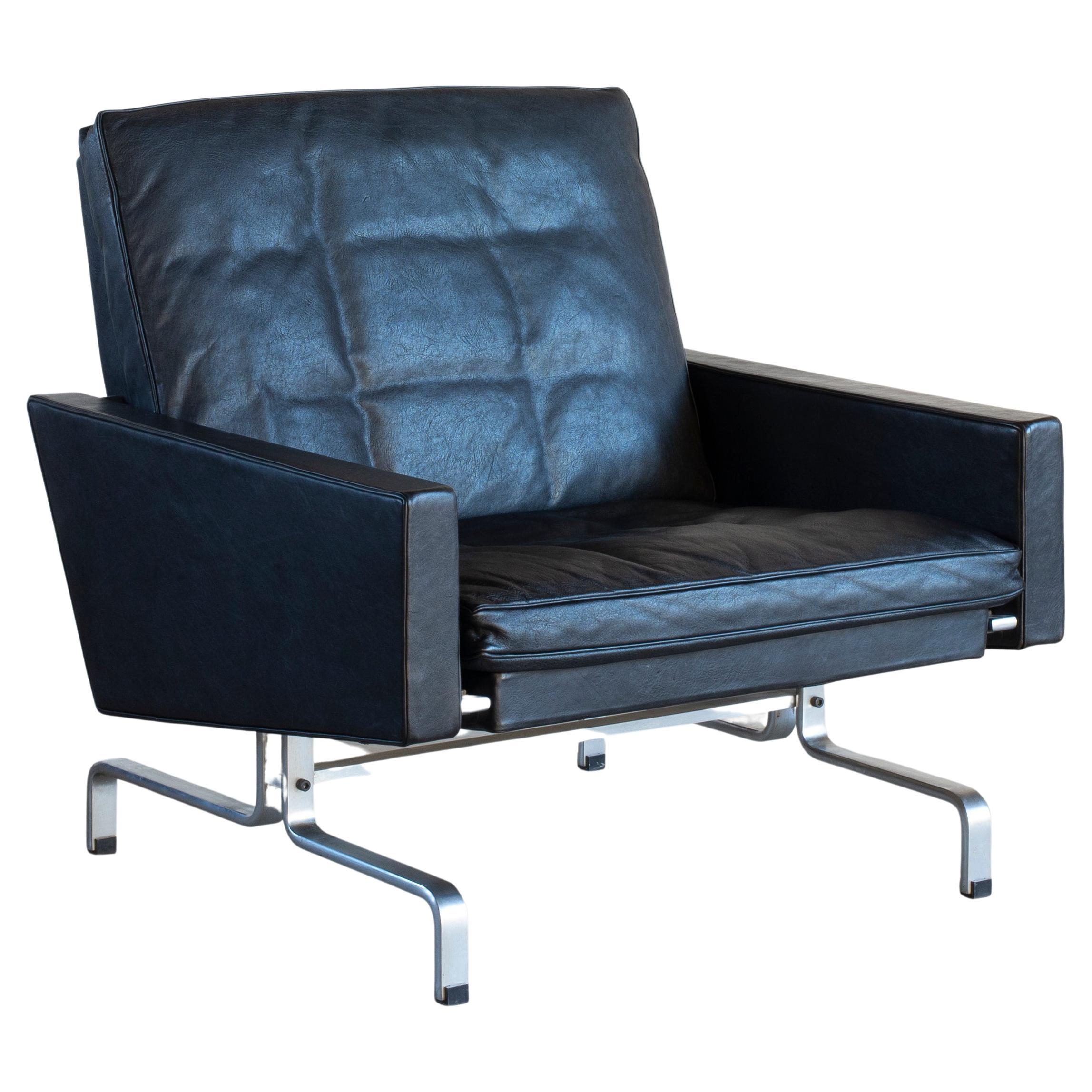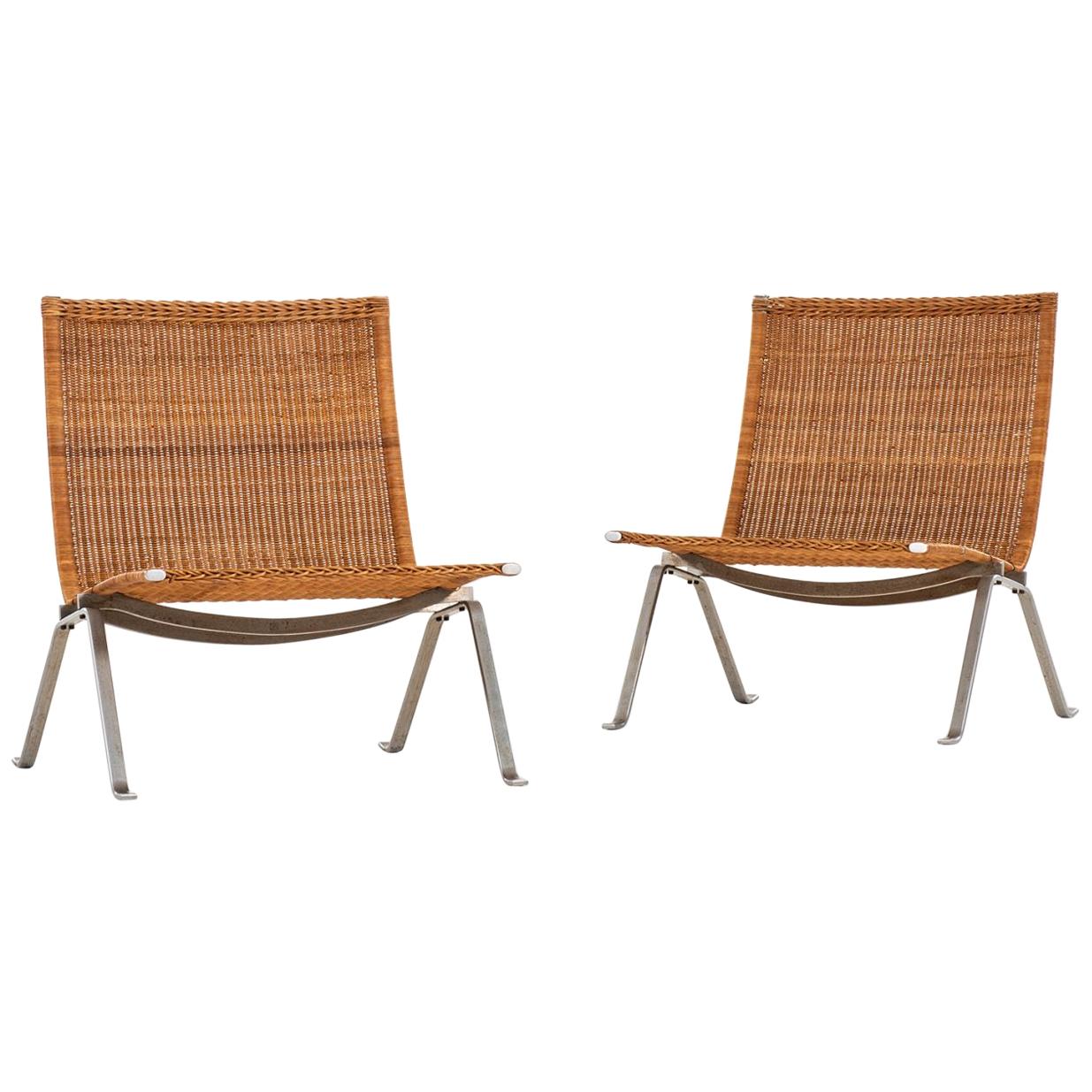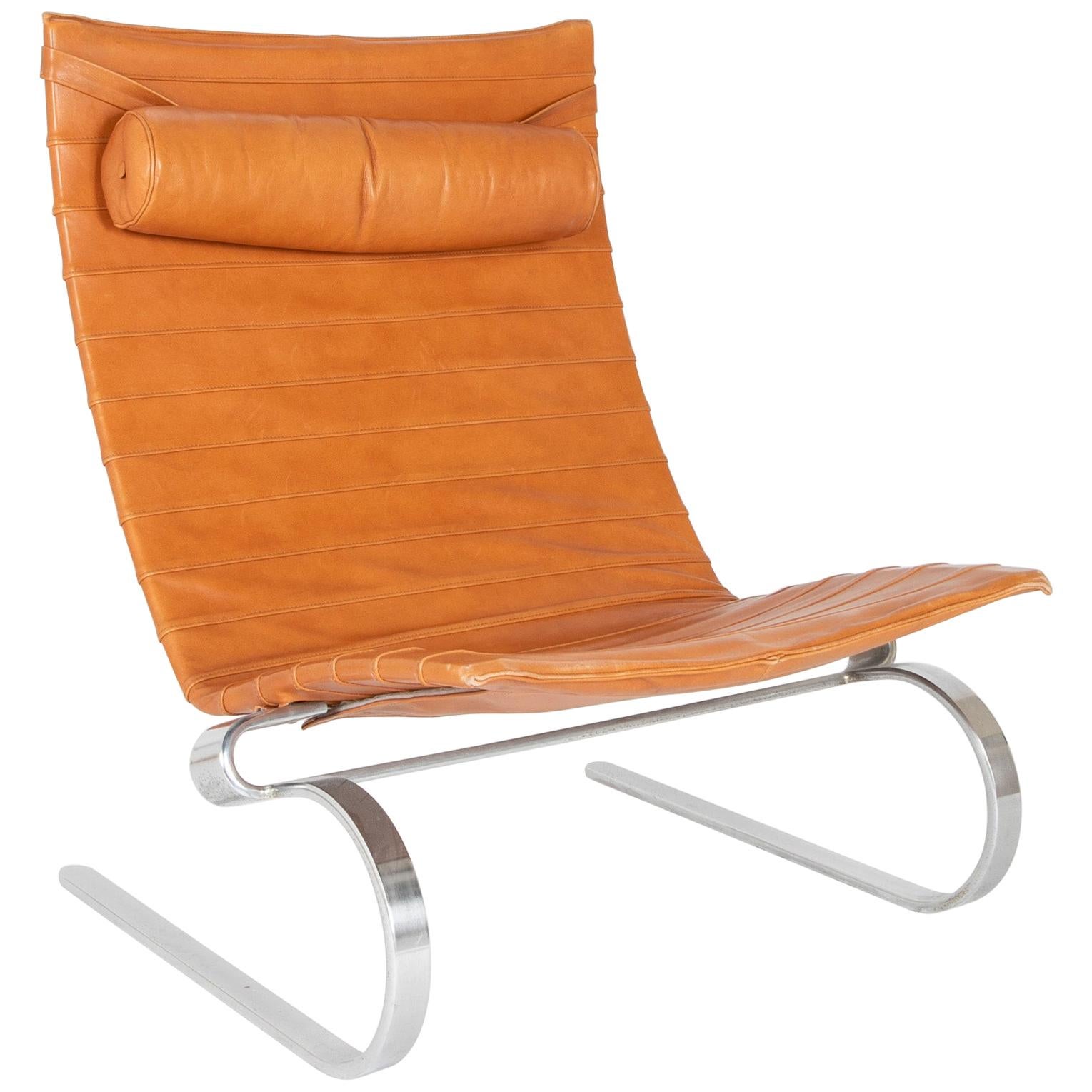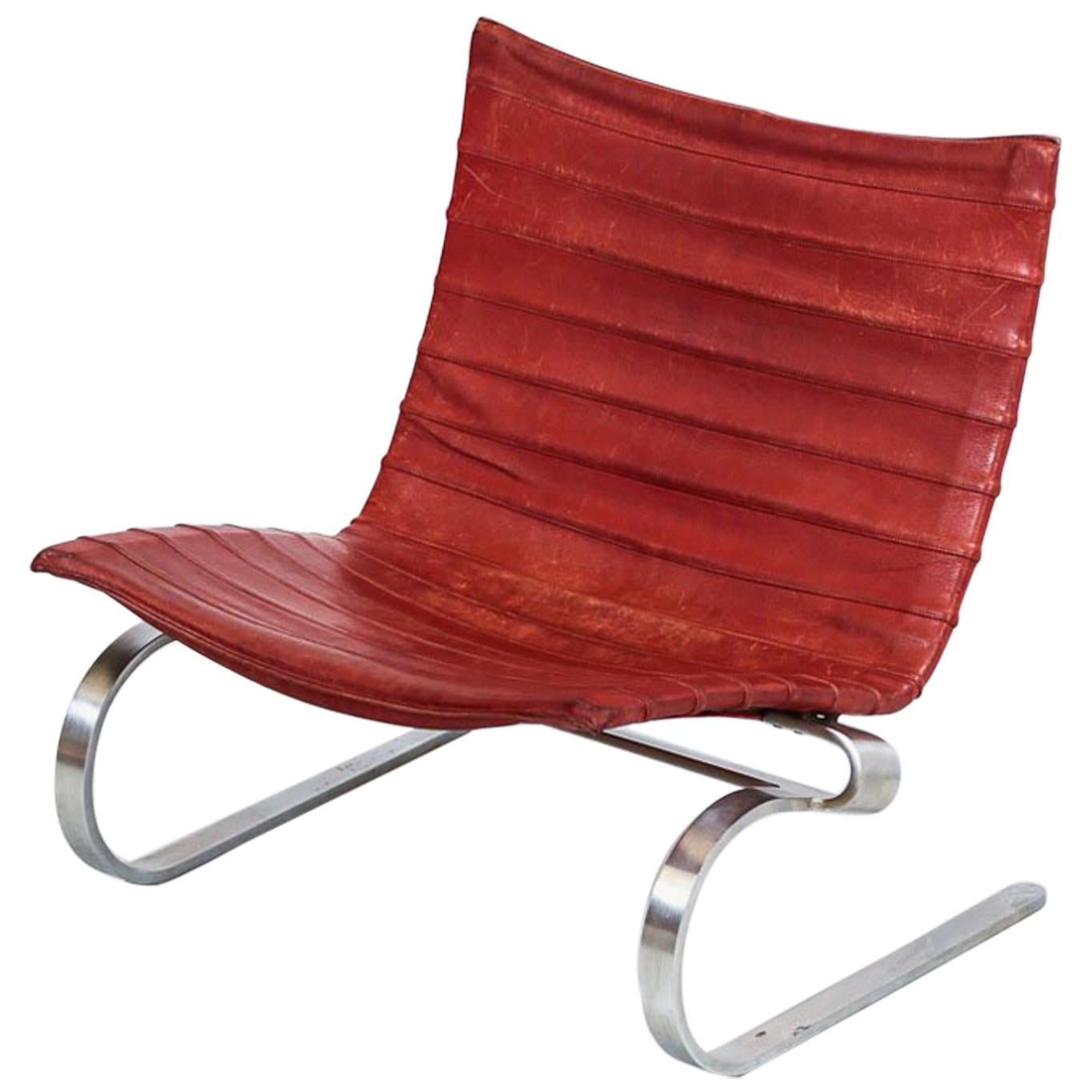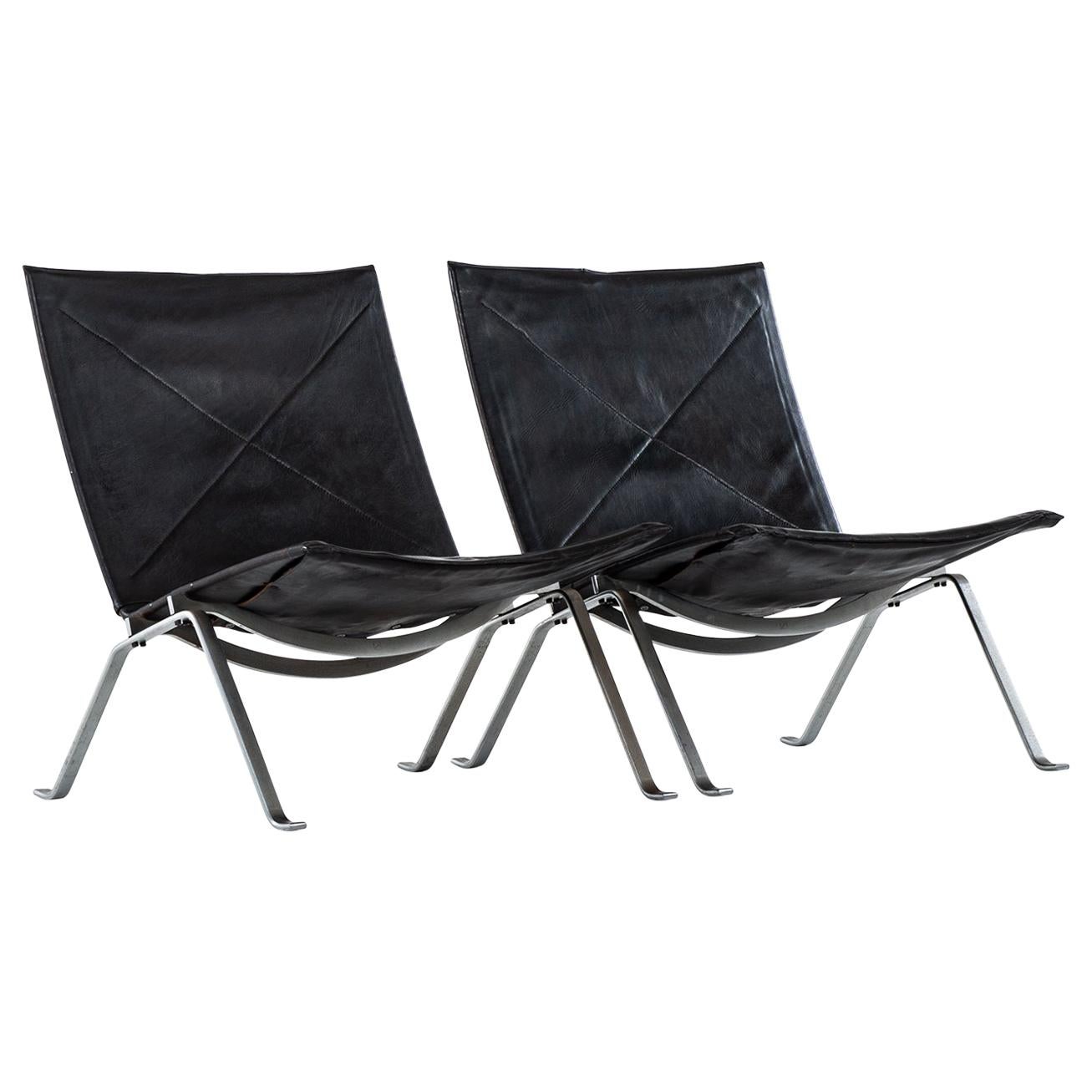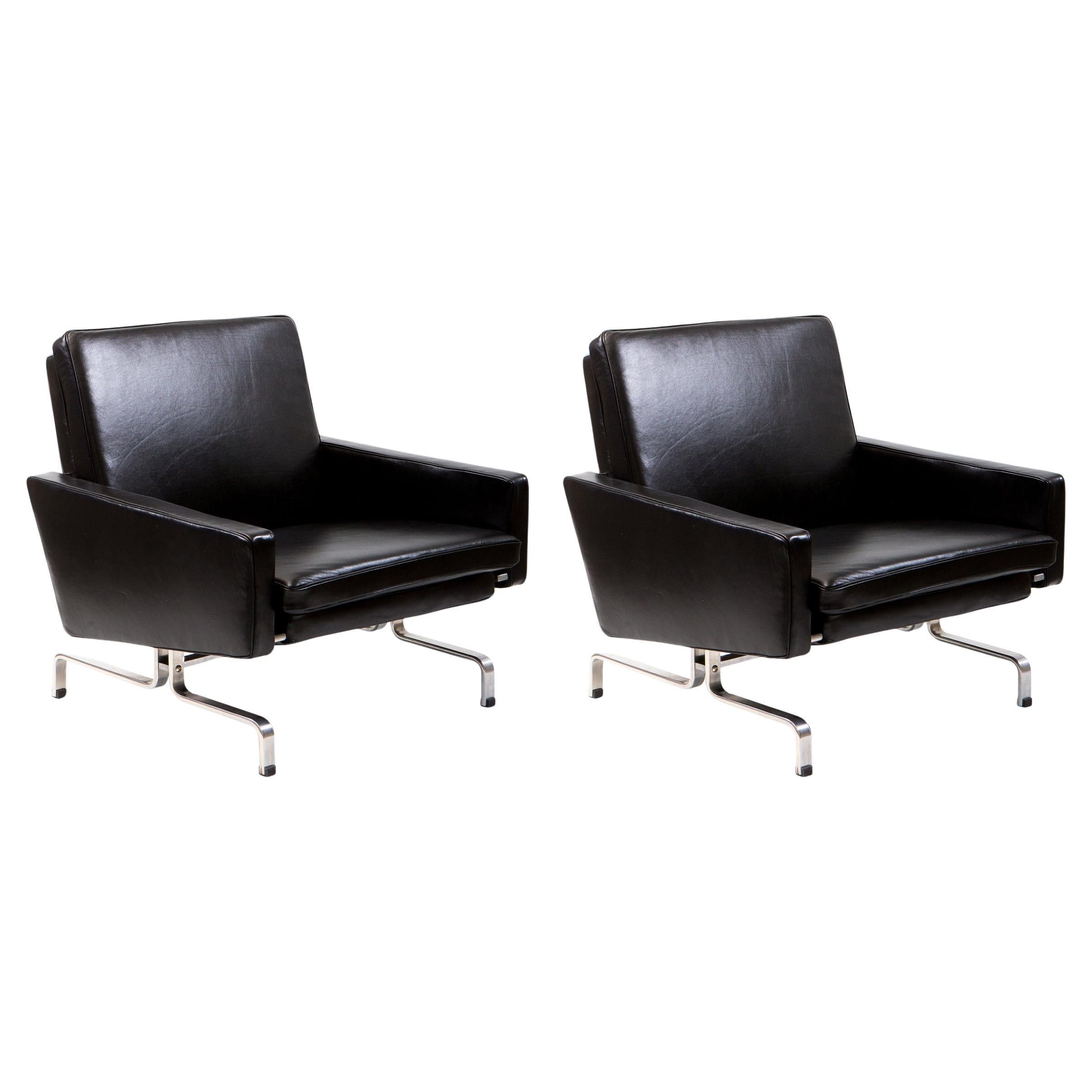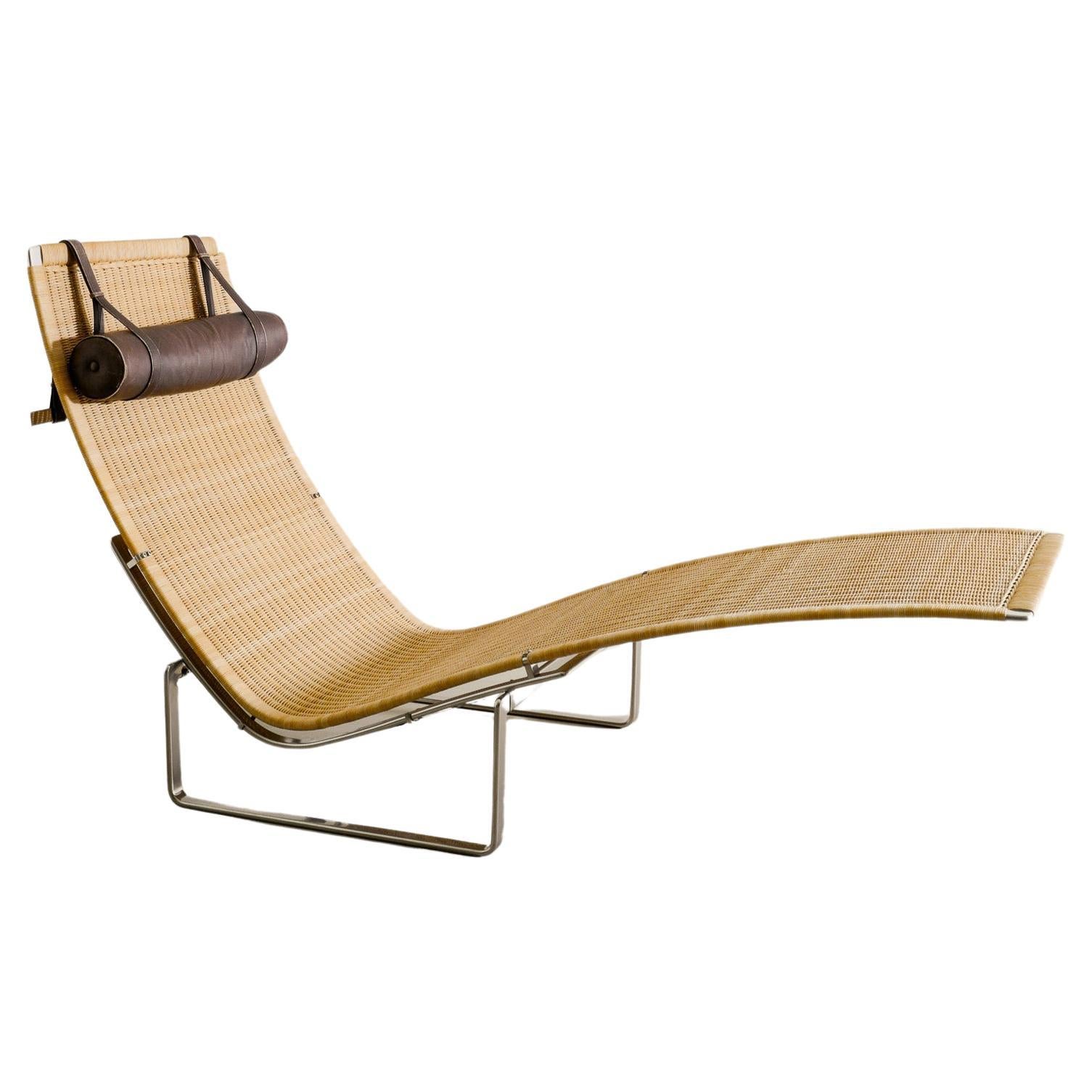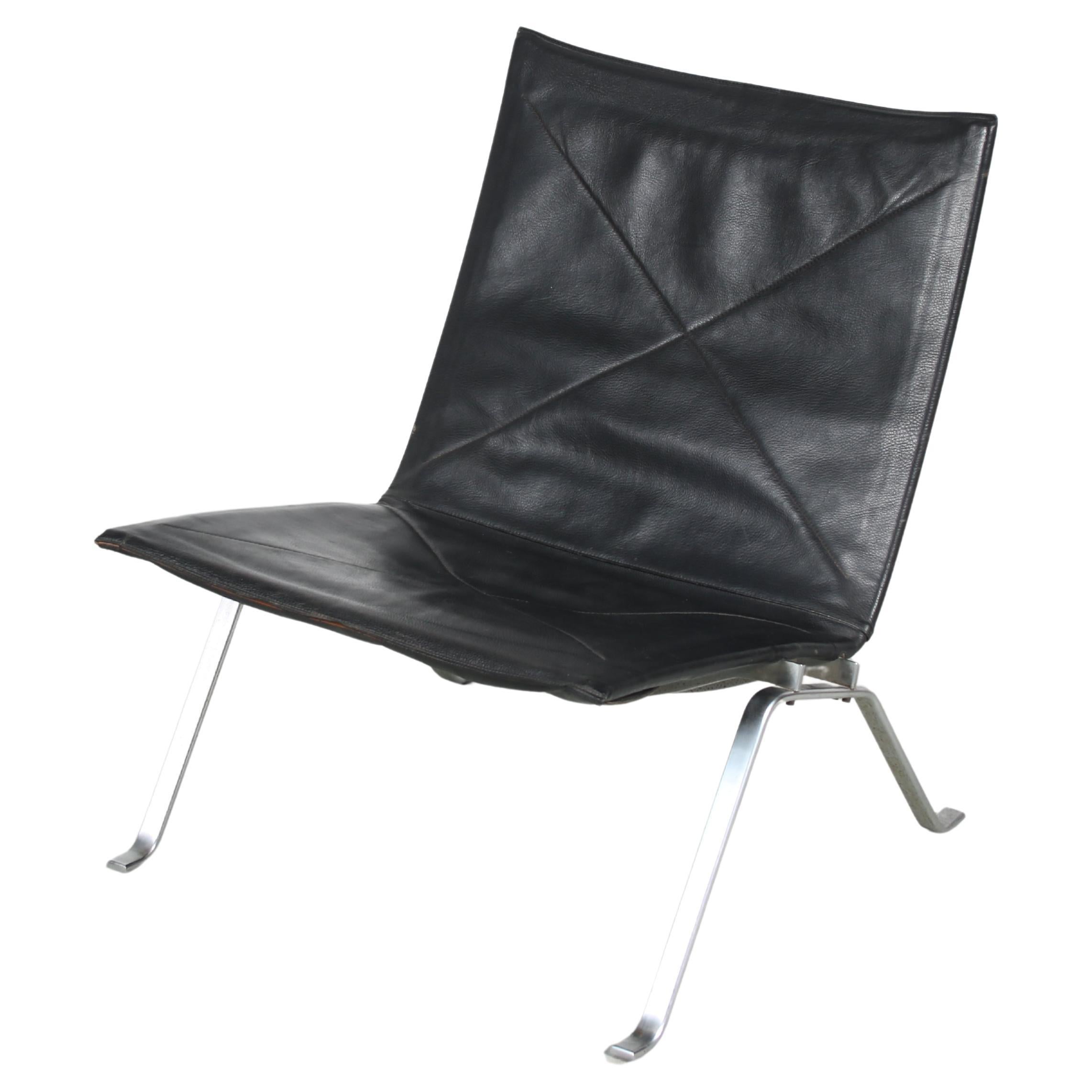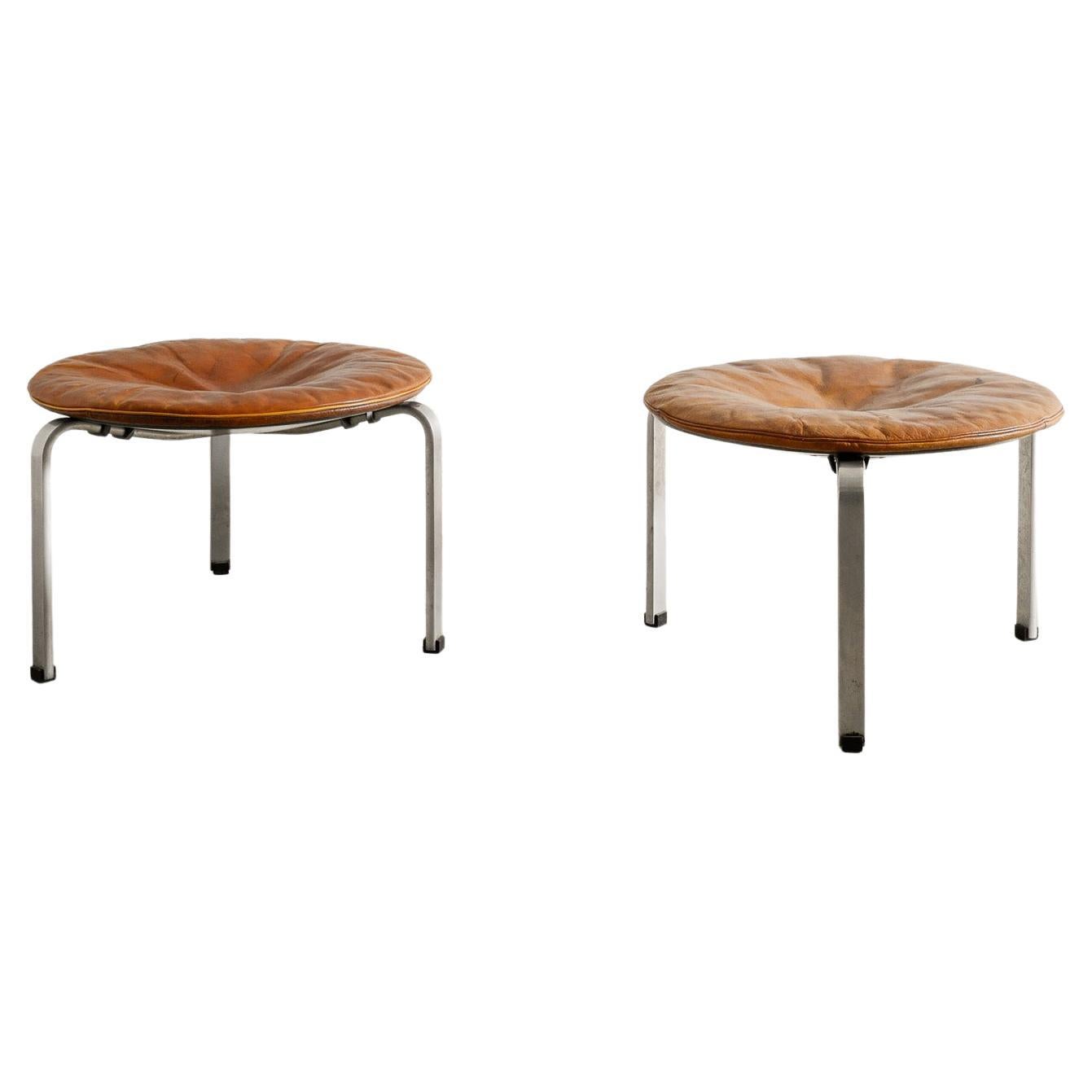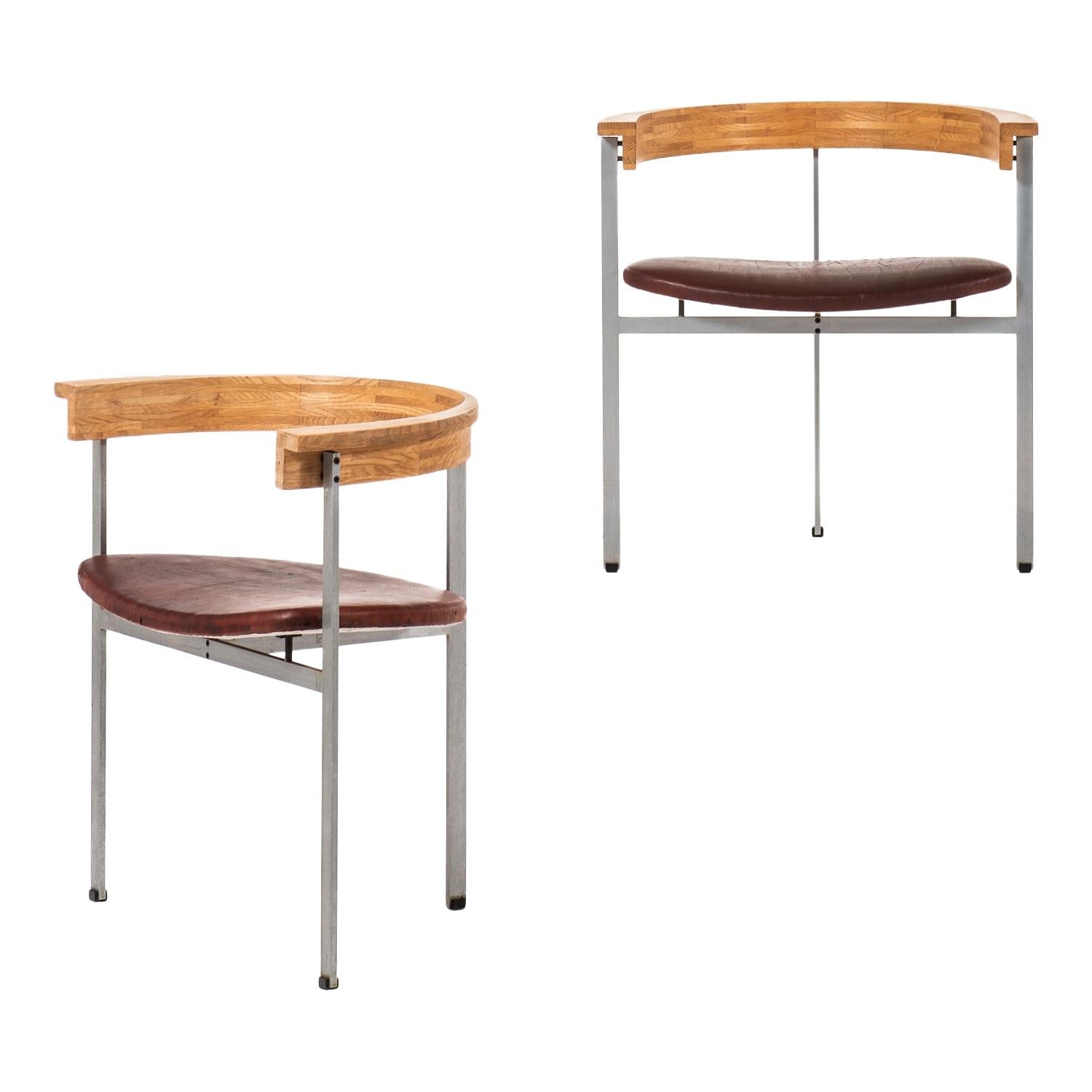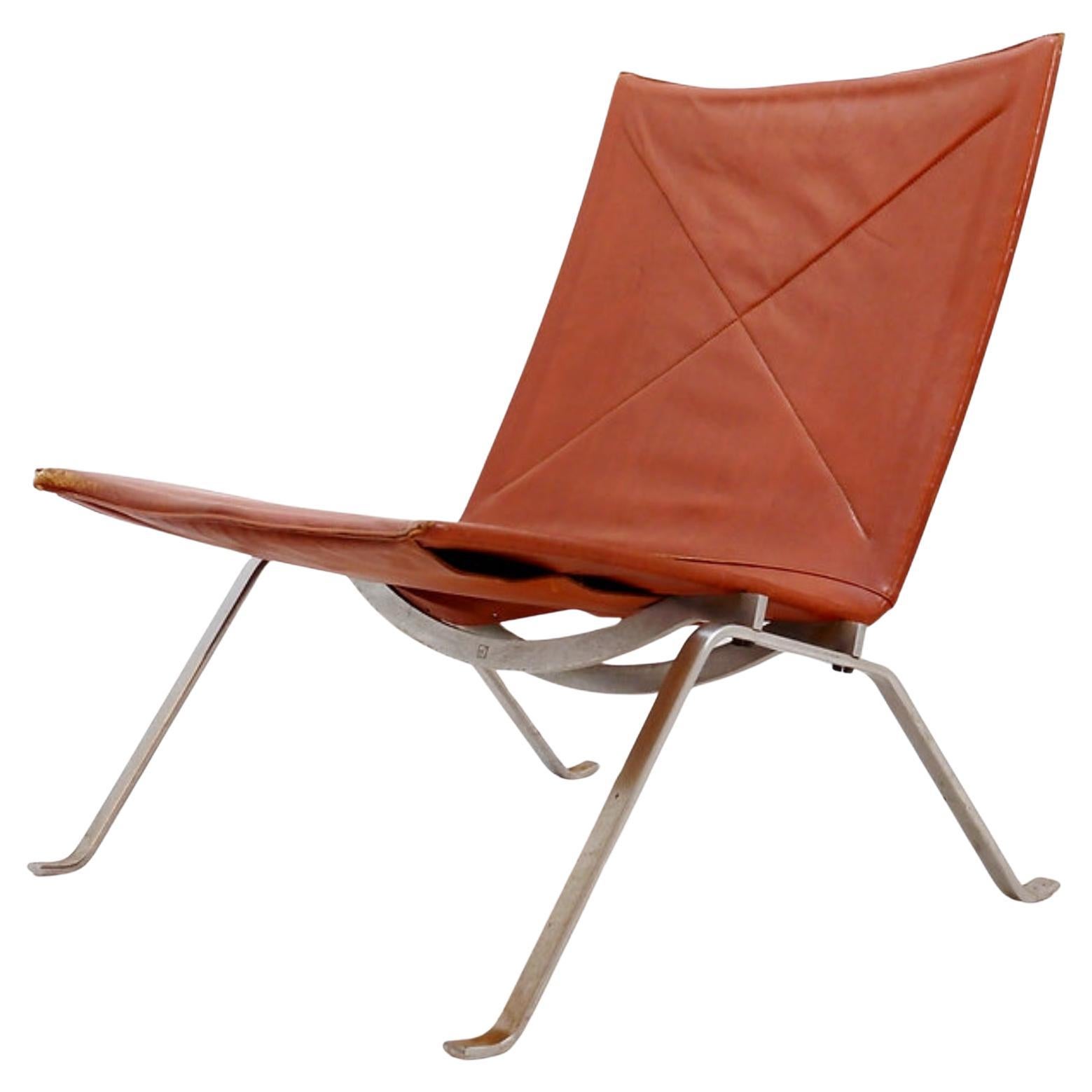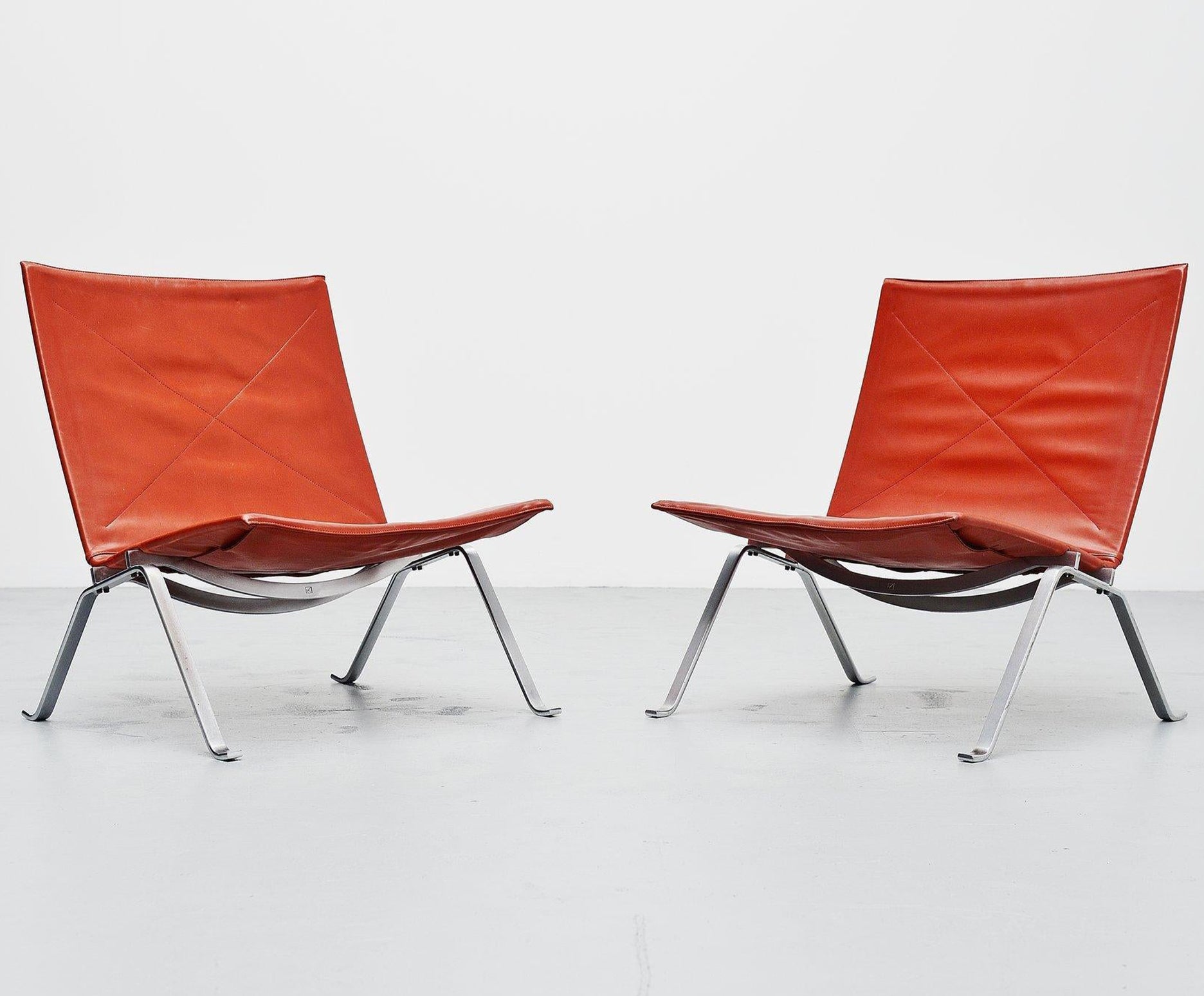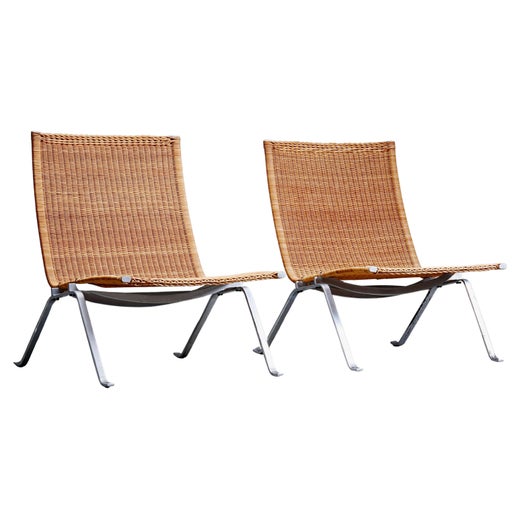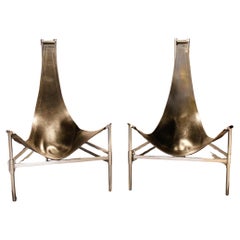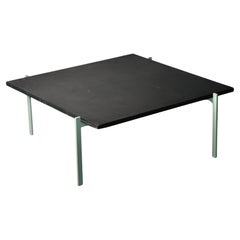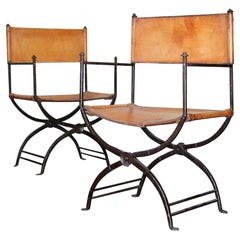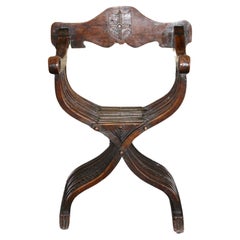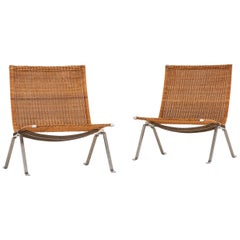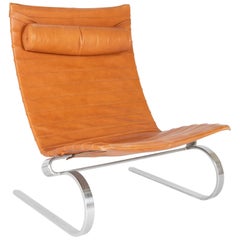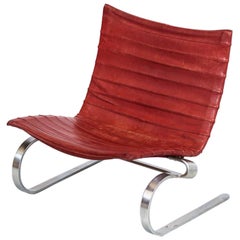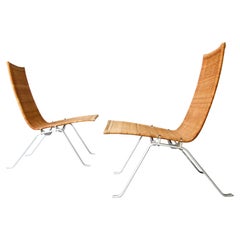
Poul Kjærholm Easy Chairs Model PK-22 Produced by E. Kold Christensen in Denmark
View Similar Items
Poul Kjærholm Easy Chairs Model PK-22 Produced by E. Kold Christensen in Denmark
About the Item
- Creator:E. Kold Christensen (Cabinetmaker),Poul Kjærholm (Artist)
- Design:
- Dimensions:Height: 29.14 in (74 cm)Width: 24.81 in (63 cm)Depth: 24.81 in (63 cm)Seat Height: 13.39 in (34 cm)
- Sold As:Set of 2
- Materials and Techniques:
- Place of Origin:
- Period:
- Date of Manufacture:1950 c
- Condition:Wear consistent with age and use.
- Seller Location:grand Lancy, CH
- Reference Number:1stDibs: LU1045042953312
PK22 Chair
While his mid-century Danish peers were working with wood, Poul Kjærholm (1929–80) found inspiration in the structural potential of steel. His innovative PK22 chair, designed in 1956 for E. Kold Christensen, offers a modern take on the style of ancient folding chairs through its 20th-century engineering.
Trained as a cabinetmaker, Kjærholm was influenced by Ludwig Mies van der Rohe, whose 1929 Barcelona chair — created with Lilly Reich — anticipated the PK22 with its angled metal frame and leather welted cushions. Kjærholm’s pieces balanced precise lines of stainless steel with leather, rope and wicker, each selected with a consideration of how they age. As the organic materials take on imperfections and wear, their patina contrasts with the enduring strength of the steel.
The PK22 chair followed the PK25 lounge chair — completed by Kjærholm while he was studying at the Royal Danish Academy of Fine Arts in Copenhagen — and reflected his evolving approach to design. Whereas the PK25 involved a single steel piece with a rope seat, the PK22 chair offered a simpler shape. Its two leg pieces bend into feet and are connected by two crossbars that curve downward to support a rectangle of leather or woven cane. This allows a person to rest without feeling the metal on the seat or the front edge, and it also makes for easy disassembling.
Because every element of the PK22 chair’s spare construction is visible, Kjærholm considered its aesthetics down to its exposed joints. Its immediate commercial success fueled Kjærholm’s career, and Fritz Hansen continues to manufacture the chair today.
Poul Kjærholm
A trained cabinetmaker, Poul Kjærholm’s use of industrial methods and materials in the 1960s brought a fresh, graceful, sleek new style to Danish modern design.
At what is now the Royal Danish Academy of Fine Arts in Copenhagen, Kjærholm studied under Hans Wegner and Jørn Utzon — an industrial designer and the architect of the celebrated Sydney Opera House. The latter greatly influenced Kjærholm’s furniture production techniques — although he employed natural materials such as cane and leather, to a far greater extent than his peers Kjærholm embraced the use of steel (rather than wood) framing for his chairs, daybeds and tables.
Kjærholm’s signal design was the PK22 chair of 1956, a low-slung leather lounger on a steel base. The ideas introduced in the PK22 — Kjærholm’s designs were named using a numeric system devised with his manufacturer, E. Kold Christensen — were refined throughout his career, as the offerings below show: the PK11 chair of 1957, with back and armrests formed by a semicircle of ash; the capacious, richly patinated leather seat of a vintage 1961 PK9 chair; the elegant rattan swoop of the PK 24 chaise longue (1965). The chaise longue's leather headrest, held in place by a steel counterweight, best shows Kjærholm's particular gift for combining technological advancements with a respect for traditional detailing.
While respectful of the past, Poul Kjærholm's sensibility is one of optimism and expectation. His was design for those who lived with verve and élan, and confidently anticipated the future.
Find a collection of vintage Poul Kjærholm furniture on 1stDibs.
More From This Seller
View AllVintage 1980s Swedish Armchairs
Steel
Vintage 1970s Danish Coffee and Cocktail Tables
Slate, Metal
Early 20th Century American Armchairs
Wrought Iron
Antique 19th Century European Armchairs
Wood
Antique 1810s European Armchairs
Wood
Antique Late 19th Century Swiss Armchairs
Fabric, Wood
You May Also Like
Mid-20th Century Danish Scandinavian Modern Armchairs
Steel
Vintage 1950s Danish Scandinavian Modern Lounge Chairs
Steel
Vintage 1970s Danish Modern Chairs
Chrome
Vintage 1960s Danish Scandinavian Modern Lounge Chairs
Steel
Vintage 1950s Danish Scandinavian Modern Lounge Chairs
Steel
Vintage 1950s Danish Scandinavian Modern Armchairs
Steel
